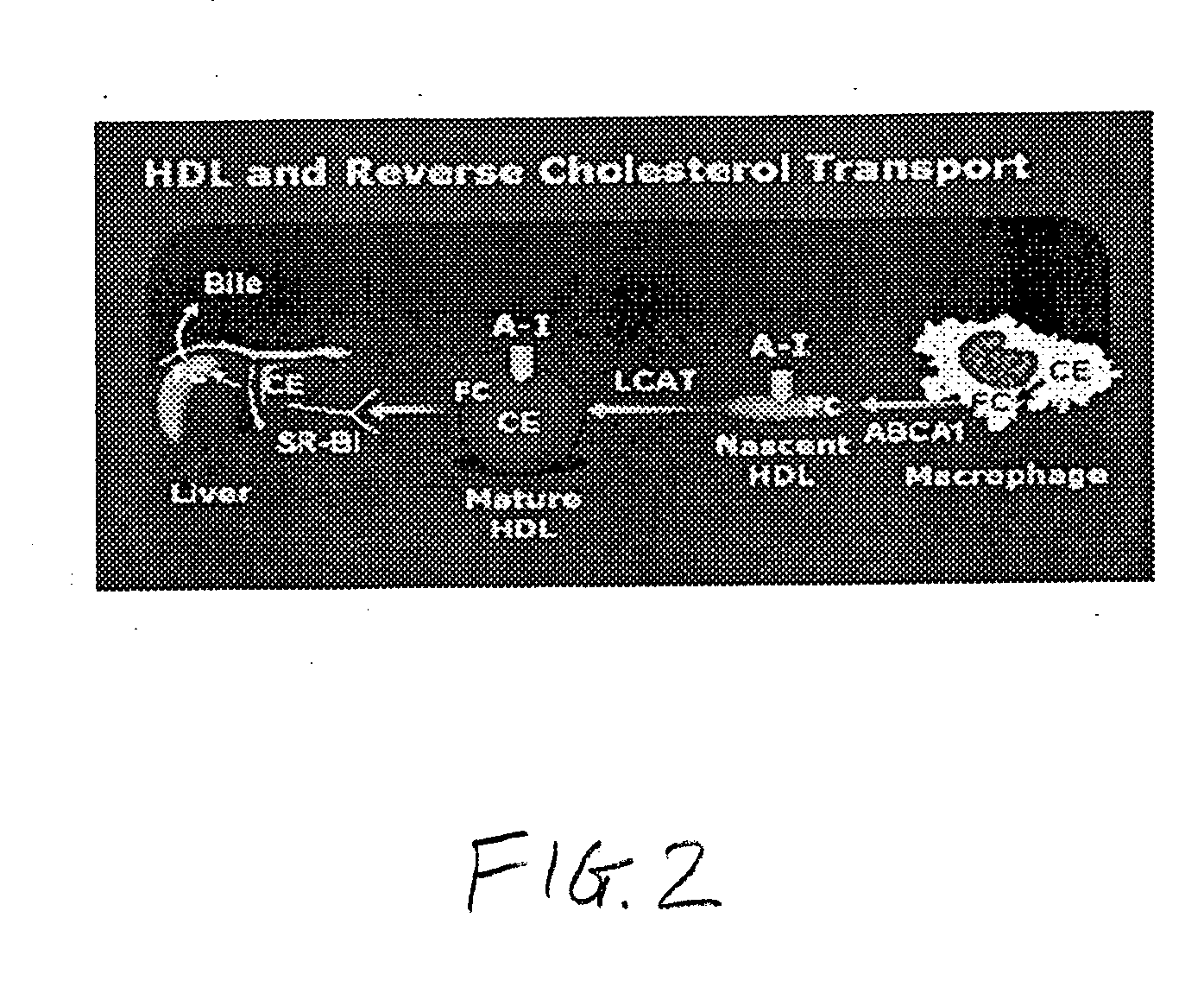Non-invasive treatment of disease using amphipathic compounds
a technology of amphipathic compounds and amphipathic compounds, which is applied in the field of amphipathic compounds for non-invasive treatment of coronary heart disease, can solve the problems of inability to completely clear the blood stream of high levels of ldl and vldl cells in the body, and the indirect cost of treatment to society, so as to reduce the extent of atherosclerosis
- Summary
- Abstract
- Description
- Claims
- Application Information
AI Technical Summary
Benefits of technology
Problems solved by technology
Method used
Image
Examples
Embodiment Construction
[0048] According to one embodiment, the present invention features a non-invasive delivery system and method for treating diseases such as, but not limited to, cardiovascular diseases. In the preferred embodiment, the present invention features a system and method for pulmonary delivery of one or more therapeutic agents to treat cardiovascular disease through reverse cholesterol transport.
[0049] As used in the present application, the term “non-invasive” is intended to denote a delivery method and / or apparatus that does not involve the puncturing or incision of the skin or a membrane or the insertion of an instrument into the body. For purposes of this application, the term non-invasive is not intended to include enteral delivery. For illustrative purposes only, the present invention will be described wherein the non-invasive delivery method and apparatus includes a pulmonary delivery method and apparatus, though one skilled in the art will recognize that the present invention also...
PUM
| Property | Measurement | Unit |
|---|---|---|
| hydrodynamic radius | aaaaa | aaaaa |
| thickness | aaaaa | aaaaa |
| surface area | aaaaa | aaaaa |
Abstract
Description
Claims
Application Information
 Login to View More
Login to View More - R&D
- Intellectual Property
- Life Sciences
- Materials
- Tech Scout
- Unparalleled Data Quality
- Higher Quality Content
- 60% Fewer Hallucinations
Browse by: Latest US Patents, China's latest patents, Technical Efficacy Thesaurus, Application Domain, Technology Topic, Popular Technical Reports.
© 2025 PatSnap. All rights reserved.Legal|Privacy policy|Modern Slavery Act Transparency Statement|Sitemap|About US| Contact US: help@patsnap.com



